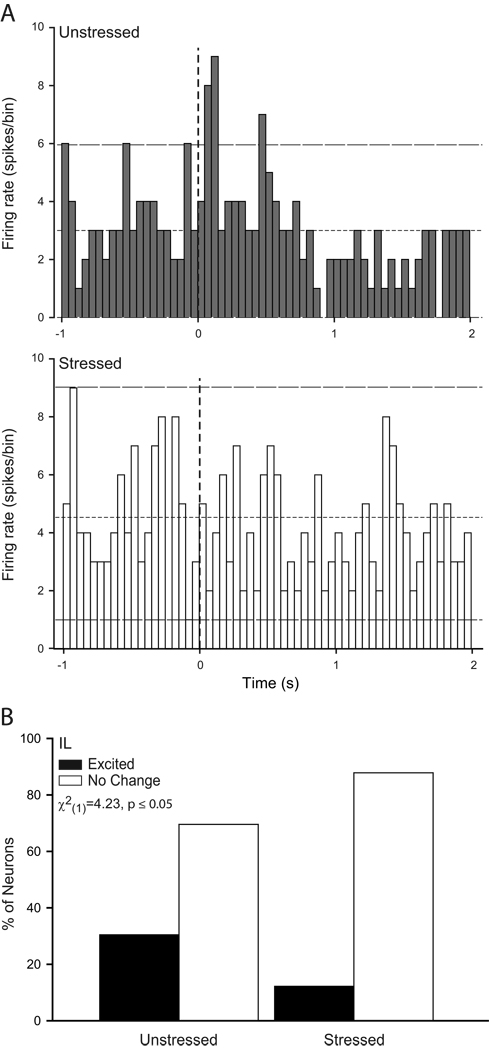Figure 6.
Chronic stress decreases the proportion of neurons in infralimbic cortex that show CS-induced excitation during extinction retrieval following paired conditioning. (A) Representative raw firing rate (50 ms bin size) for the 1 s preceding and 2 s following CS onset (vertical dashed line) for a neuron in infralimbic cortex of an unstressed (above) and a stressed (below) rat. Horizontal lines indicate mean baseline firing rate (short dash) and 95% confidence interval for increased and decreased (long dash) firing relative to baseline. (B) Percentage of CS-responsive cells that were classified as excited (≥ 2 bins that crossed the upper 95% confidence limit) or no change (neither excited nor inhibited in response to the CS) recorded in infralimbic cortex of unstressed and stressed rats during extinction retrieval. There was a significantly higher proportion of excited IL neurons in unstressed rats.

